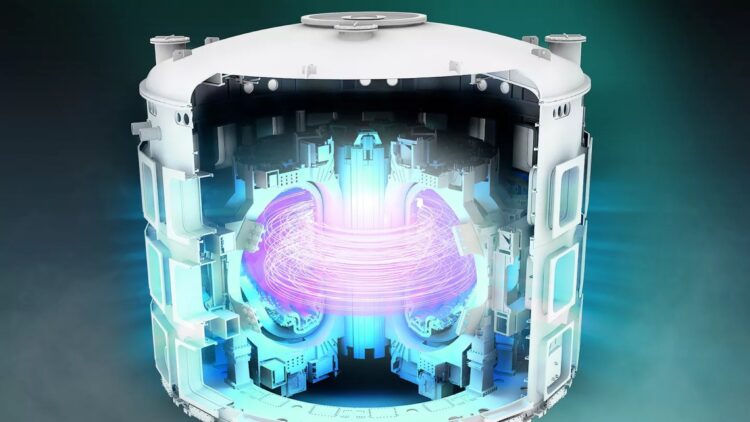A historic day for Canada and the world has been marked by a feat that brought humanity to the brink of unlocking the future of energy when a team of scientists set the fusion reactor alight to produce 600 million neutrons per second.
This breakthrough in fusion energy is a process that is similar to the sun and could change the world’s energy generation system. To contain carbon emissions globally, fusion energy has become one of the most viable forms of clean energy. Here’s a closer look at this exciting development.
The thermal-pressure breakthrough: How General Fusion is changing energy
General Fusion, a firm from Richmond, has achieved a thermal-pressure breakthrough by compressing plasma in their Magnetized Target Fusion (MTF) reactor. The target of the fusion reaction was to produce more than 600 million neutrons per second.
This shows an achievement of one of the most critical milestones in attaining practical and commercial fusion energy. General Fusion showed that compressing plasma within a spherical tokamak configuration could achieve fusion conditions in short pulses, though the company focuses on developing large-scale energy production.
The process takes plasma and heats and compresses it to the temperature existing at the core of stars with a view of sparking nuclear fusion. General Fusion does not use heavy superconducting magnets or costly laser arrays as other fusion reactors do, which gives it an edge of being cheaper and easier to develop.
This successful experiment is the first of many steps toward making fusion energy a commercial reality in the next ten years.
Why Tritium is essential to fusion energy success and Canada’s innovation
Tritium is one of the most essential fuels used in fusion reactions, and its handling is one of the major problems faced by proponents of fusion energy. The above accomplishment is attributed to the continuous partnership between UKAEA and CNL, which deals with developing tritium management techniques.
Tritium is produced and used to maintain the fusion reactions, and its effective use is critical to the commercial realization of fusion energy. The collaboration’s goal is to design technologies that enable tritium’s separation, processing, and reinjection into plasma so that it can be used as fuel once more.
Tritium is made in relatively small amounts and cannot be replenished from raw materials; tritium must be recycled to sustain a continuous fuel production line. It is clear that with the specialized knowledge of both UKAEA and CNL, this collaboration could go a long way in solving one of the significant issues currently facing the development of fusion energy.
How General Fusion’s neutron yield is a significant milestone for clean energy
As General Fusion shows, the neutrons per second rate of 600 million suggests the reactor’s capability. Fusion reactions are characterized especially by the neutron yield as a measure of efficiency. In simpler terms, the exact implication of the term neutron yield is a measure to confirm that the desired fusion has occurred and, to a greater extent, if it has generated more energy.
The density of the plasma was increased to 190 times its initial density, and the magnetic field was increased thirteen-fold, which enhanced plasma confinement. This neutron yield is one of the highest ever recorded for a fusion reactor, thus proving that General Fusion is on the right track.
Each time, the company comes closer to creating a commercially viable fusion power plant, which, if developed, will revolutionize energy production worldwide. And it is more than just a scientific advancement; it may well be the answer to the global energy crisis in the future.
The next steps: From experimental fusion to a working power plant
That is a great accomplishment, but General Fusion is still far from completing its mission. Today, the company is concentrating on bringing its Lawson Machine 26 (LM26), which is expected to show the power created by fusion at a much higher level. This machine is meant to squash plasma to a density that will produce even more fusion reactions, putting the globe one step closer to commercial fusion power.
To achieve a functional fusion power plant, several technical challenges must be met to reach the goal. However, after the progress made so far, the dream of using fusion energy as a clean and almost limitless energy source is slowly becoming a reality. General Fusion has set out to have the LM26 fusion demonstration machine operational in the next two years to generate electricity by the early to mid-2030s.
Only through such innovations as those offered by General Fusion can the world hope to look to fusion power as a critical deliverer of energy needs in the future. This breakthrough in Canada’s fusion reactor development underlines the country’s position on the cutting edge of clean energy production. It opens the door to a new form of energy production that could one day provide the world’s population with the power it needs to sustain it for future generations.

